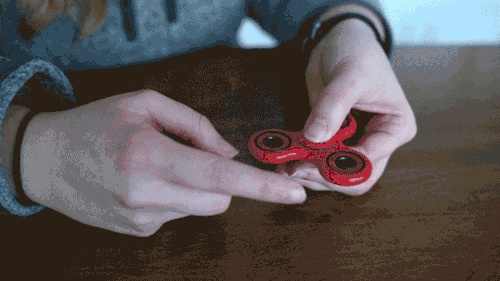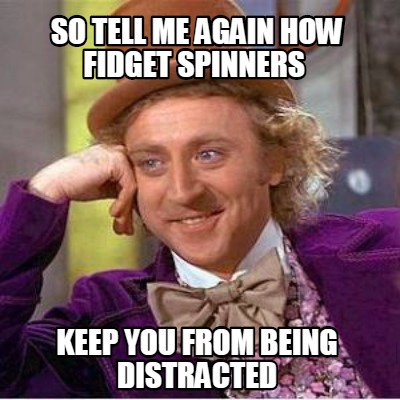TIL: The Fidget Spinner Was Invented In The 90's! Here’s All You Need To Know About It
Everyone wants this spinnamajig!
What exactly is a fidget spinner and what do you do with it?
The gadget is made up by a metal bearing that usually has two to three arms and is supposed to be held between your thumb and index finger, then spun with a quick motion of the thumb.
Who created fidget spinners?
The device was designed in the 1990's by Catherine Hettinger, an inventor from Florida who was said to build something with the intention that would help with ADHD and autism. However, the real reason was to "promote peace". She told Money magazine that the idea came to her when she saw young boys throwing rocks at the police when she was in Israel visiting her sister.
The situation was likely tied to the product of the ongoing discourse among Israelis and Palestinians. At first, she intended to create a toy that would keep children distracted but her invention unexpectedly took on a slightly more calming form. Interestingly, the design of the fidget spinner has evolved into everyone's current obsession - the new generation's equivalent of a stress ball.
Why does everyone want one now?
The trend got caught up in an Internet storm, curiously gripping the world with its satisfyingly whirly nature which happened some time in April this year.
The rising trend peaked in recent weeks and is suspected to be popularised by YouTube videos showcasing tricks performed on the fidget spinner.
like this one:
What kind of benefits do fidget spinners bring?
While some people are of the opinion that the tool brings more ‘harm’ than good, these are the perks tied to it:
1. Relieves stress in general - there is research present to prove that such sensory approaches can alleviate stress. Though scientists have pointed out the lack of accuracy when conducting these studies so there is no any solid conclusion as of yet.
2. Helps autistic students focus better - by limiting stimuli for autistic students who are often sensitive to their environment by giving something to channel their attention to.
Director of the Centre of Autism, Carol Povey said, “It is vital that schools develop a proper understanding about autistic pupils so their specific sensory needs can be met. We therefore hope allowances are made for particular children if they find that a fidget spinner or similar toy helps them concentrate, relax and learn.”
3. Helps ADHD students perform better - dopamine is produced when children pour their need for movement into the toy, increasing their capacity to learn.
The claim has been backed by founder of the ADHD Foundation, Dr Tony Lloyd who said, “The scientific evidence linking movement and improved thinking skills is well established – and indeed in the case of children with ADHD – their body moves and fidgets compulsively as away of enabling the brain to produce dopamine – a neurotransmitter linked to learning, concentration and memory.”
However, some schools label fidget spinners a distraction and have even banned the device
People are divided over the issue about bringing the toy into a learning environment, due to:
1. Whirring noise from the toy disrupts the class.
2. Tendency to distract students when one of them decides to perform elaborate tricks.
3. Hazard it poses for children. For example, the Australian boy who nearly lost his eye.
4. “Using a spinner-like gadget is more likely to serve as a distraction than a benefit for individuals with ADHD,” said clinical psychologist Mark Rapport, who is doubtful over minor hand workouts being able to replace full body exercises which are usually prescribed to those with ADHD.
So how? What can we conclude?
It remains debatable whether or not it can be use to aid those with learning disabilities. Till then, it'd probably be best to use it as a toy instead and to be cautious when handling the device.
That being said, you can get one to be enjoyed as a new-age yo-yo or perhaps, just a calming contraption for the office. :)





